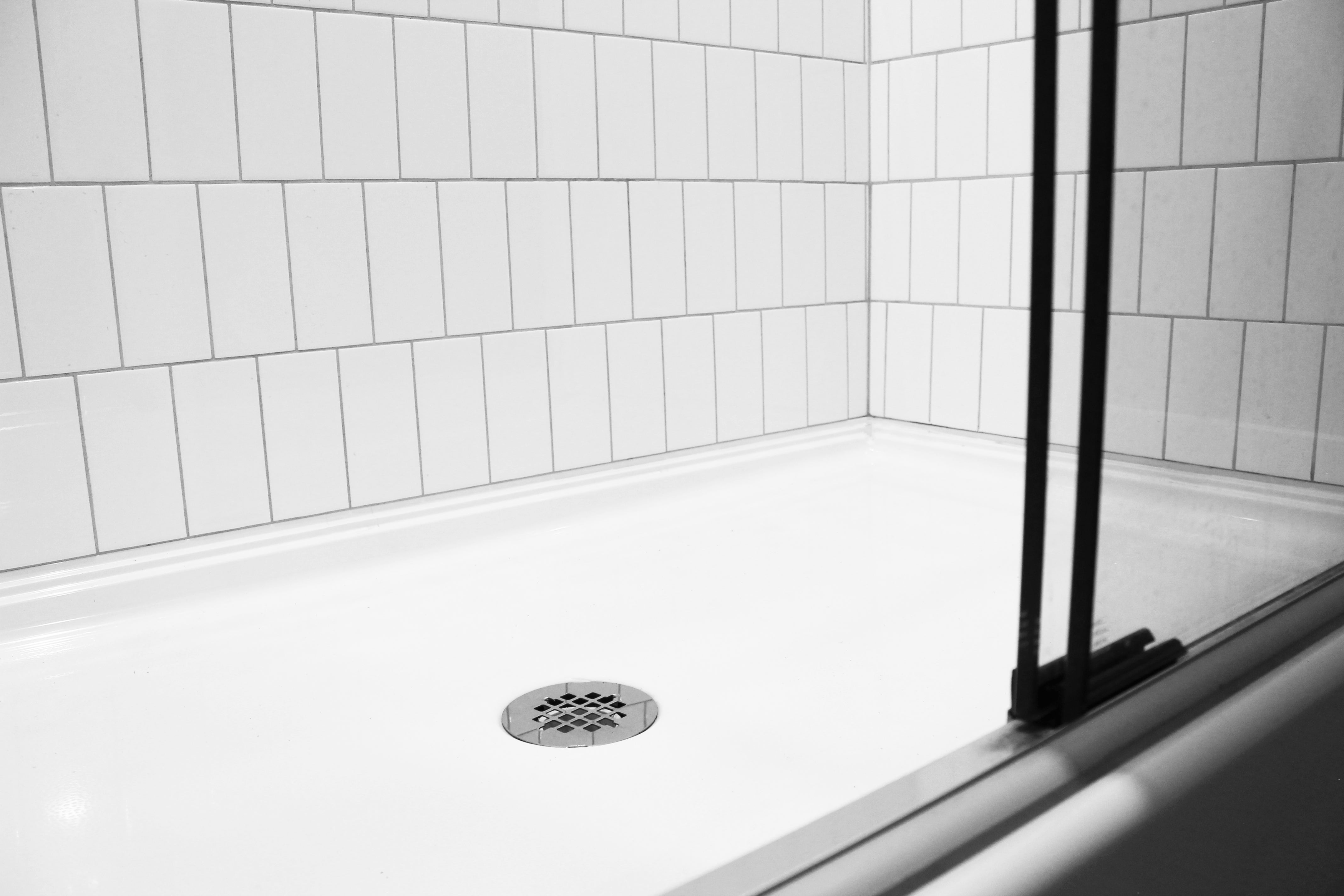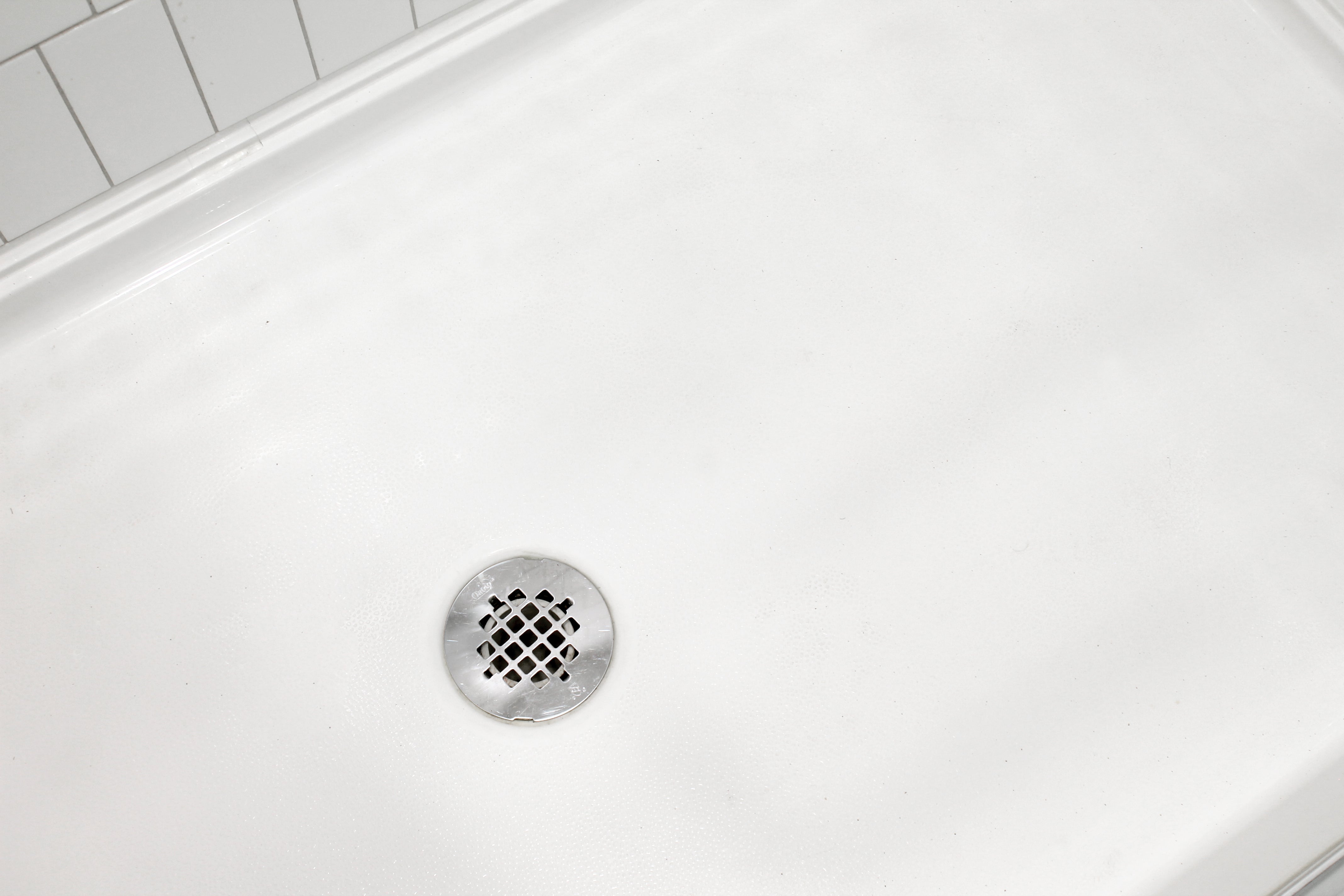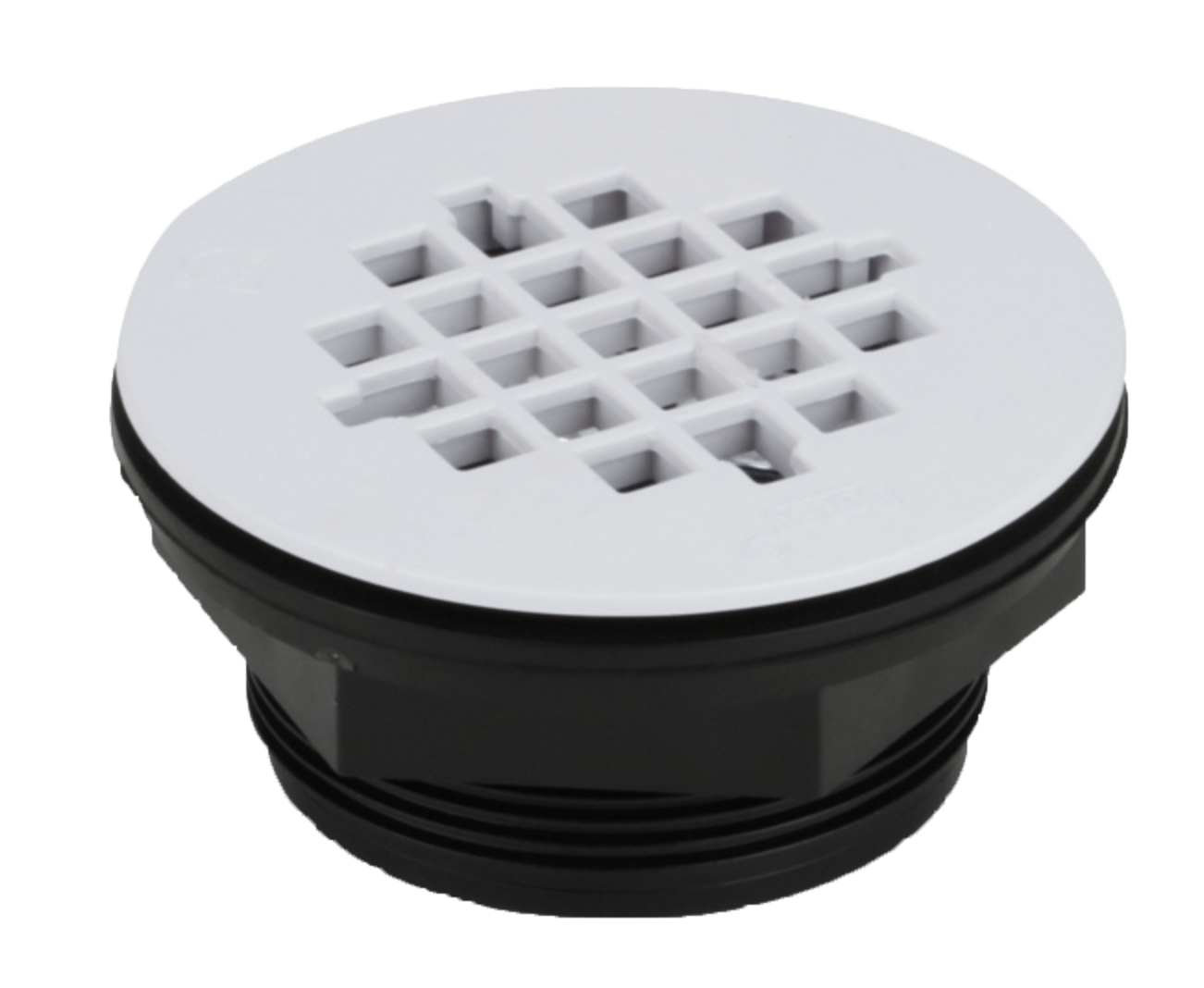How To Install Pvc Shower Drain
Tips to assist brand your shower drain installation a success
If you are preparing to install an Oatey® Brass or Plastic No-Caulk Shower Bleed, these tips volition help you lot feel confident and ready to tackle your shower drain installation project like a Main Plumber. You tin can too refer to Oatey'south detailed step-by-pace directions for no-caulk shower drain installations.
ane. Empathize Oatey No-Caulk Shower Bleed use.
 No-Caulk shower drain products are not intended for use in a tiled shower flooring. Oatey Contumely and Plastic No-Caulk Shower Drains are designed for use with preformed shower stall bases. If the shower base is non a preformed stall, check out other shower drains available through Oatey.com that will accommodate your specifications.
No-Caulk shower drain products are not intended for use in a tiled shower flooring. Oatey Contumely and Plastic No-Caulk Shower Drains are designed for use with preformed shower stall bases. If the shower base is non a preformed stall, check out other shower drains available through Oatey.com that will accommodate your specifications.
ii. Verify drainpipe size.
Verify the size of the vertical drainpipe – this should be two". Annotation that the ii" No-Caulk gasket provided with the drain assembly volition create a watertight seal around PVC, ABS, cast iron and galvanized drainpipe. (The outside dimensions of these pipes are the aforementioned and referred to equally Iron Piping Size or IPS). If your vertical drainpipe is two" DWV Copper or 1½" IPS size, please refer to Oatey's website for optional gasket selection.
iii. Determine cloth of existing piping.
Know the fabric of the pipe you are using earlier installation. The material volition aid make up one's mind the type of connectedness used on the pipe. There are mostly 5 different types of pipes found in residential use and divided betwixt plastic or metallic material:
Plastics: inexpensive and durable pipe that is more commonly found in newer construction; comes in ii different types, both of which are ideal for residential drains and are preferred because they outlast most other types of pipes:
- ABS: Ordinarily a black piping
- PVC: Typically a white pipe
Metals: Typically found in older dwellings, at that place are three types of metal pipes:
- Copper: Resists corrosion and lasts a long fourth dimension merely is more expensive than plastic.
- Steel: Galvanized steel pipes can be found in older homes and typically have a life expectancy of fifty years.
- Bandage Iron: Heavy gauge material and normally preferred in older homes or to eliminate the sound of running h2o
4. Know the material of the shower base of operations.

- Oatey Plumber'due south Putty is the most commonly used putty for No-Caulk Shower Drain installation - with exception of ABS which is explained in bullet five
- However, if the shower base is Granite, Marble, Quartz, Sandstone, Corian®, Plastic or whatsoever natural porous surface, it is necessary to utilise a Oatey Stain Gratuitous Plumber's Putty
- To ensure putty or sealant compatibility with shower base fabric, refer to the products submittal at Oatey.com
five. Identify the No-Caulk Shower Drain material.
At that place are three different Oatey No-Caulk Shower Drain materials bachelor for preformed shower bases. Once the shower drain material is determined, select the approved putty or sealant for your application.
- Here are all the unlike variations of No-Caulk Shower Drains:
- Oatey 2 in. 101 PNC PVC NO-CAULK shower drain w/ stainless steel strainer
- Oatey 2 in. 101 PNC ABS NO-CAULK shower bleed w/ plastic strainer
- Oatey 2 in. 101 PNC PVC NO-CAULK shower drain w/ Ultrashine® polished brass strainer
- Oatey ii in. 101 PNC ABS NO-CAULK shower drain w/ stainless steel strainer
- Oatey 2 in. 140 NC Contumely NO-CAULK shower drain w/ stainless steel strainer
- Any ABS No-Caulk Shower Bleed installation requires the employ of silicone considering plumber'due south putty is not approved for use with ABS materials.
6. Determine the superlative of vertical drainpipe.
Before installing the shower bleed, determine the finished height of the vertical drainpipe to ensure it will seat properly into the no-caulk shower drain. Taking the fourth dimension to check before finishing the installation can salve a slap-up amount of time.
7. Know the local lawmaking requirements.
Ever bank check your local building and plumbing lawmaking requirements before starting any projection. It is required to have a permit with your town before plumbing projects to guarantee you will laissez passer inspection. To find out the codes for building and plumbing, visit your boondocks hall, await online on your town'due south website, or check your local library for more than assistance.
Other Tips to Avoid Installation Issues:
-
 Know the right order for installing the rubber washer and friction washer.
Know the right order for installing the rubber washer and friction washer. - The big rubber sealing washer will be placed up against the underside of the shower base, and the friction washer will be placed between the rubber sealing washer and locking nut.
- Chamfering the pipe cease will assist foreclose gasket harm and is recommended.
- Chamfering refers to removing the sharp border on the exterior of the pipe which volition prevent gouging and the possibility of cutting into the safety gasket.
- Know the correct direction of the No-Caulk washer.
- Flat end down; beveled side must be upward.
How to Remove the No-Caulk Shower Drain Embrace:
If you need to remove the shower strainer for access to clean the drain or but freshen upward the strainer's appearance, follow these steps to eliminate possible damage to the strainer during removal.
- Use a screwdriver for the removal
- Place the end of the screwdriver under the notched surface area of the strainer
- Utilize light upward pressure while being conscientious to not harm the finished surface
- No-caulk shower drain cover should release from shower base
- If you have whatsoever questions or concerns regarding the removal of your strainer, please contact Oatey Client Service at technical@oatey.com
Common DIY Shower Drain Questions
- Can I all the same caulk the shower bleed even though it is a No-caulk shower drain?
- No, adding the caulk can affect the capability to create a watertight seal in the shower base of operations.
- Practice you need a pan liner for the No-caulk shower bleed?
- No, the shower base is considered to be the waterproof barrier.
- How high should the PVC pipage sit down inside the bleed torso to ensure proper installation?
- The vertical DWV pipe should fully terminate ane" within the no-caulk drain body before the gasket is installed to create the watertight seal.
- Any tips for getting the rubber to slide over the PVC easily?
- Chamfering, too known equally beveling, on the outside of the vertical DWV piping later on it has been cutting to the desired length will prevent whatever gasket damage and allow the gasket to be pushed down hands to the base of the drain torso.
- Do you need to use a sealant between the flange and the shower base to continue water from leaking through the threads?
- By using Oatey Plumber'due south Putty or 100% silicone sealant, a watertight seal is created between the drain flange and shower base if using the contumely or PVC bleed assemblies. If using ABS no-caulk drain associates, plumber'due south putty is not approved for ABS product installation and 100% silicone should be applied instead.
- If installing an approved no-caulk drain with plumber's putty in colder temperatures, tighten into place and then allow for twenty mins of residuum time. Then retighten bleed to ensure all backlog plumber's putty is removed from under the flange.
Source: https://www.oatey.com/faqs-blog-videos-case-studies/blog/7-things-know-installing-no-caulk-shower-drain
Posted by: sturgesbeires95.blogspot.com


0 Response to "How To Install Pvc Shower Drain"
Post a Comment